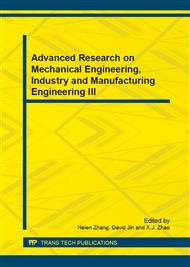[1]
Bhat MR, Majeed Ma, Murthy CRL. Characterization of fatigue damage in unidirectional GFRP composites through acoustic emission signal analysis. NDT&E International 1994; 27(1): 27-32.
DOI: 10.1016/0963-8695(94)90007-8
Google Scholar
[2]
Carlsson L, Norrbom B. Acoustic emission from graphite/epoxy composite laminates with special reference to delamination. J Mater Sci 1983; 18: 2503-9.
DOI: 10.1007/bf00541857
Google Scholar
[3]
Haselbach W, Lauke B. Acoustic emission of debonding between fibre and matrix to evaluate local adhesion. Compos Sci Technol 2003; 63: 2155-62.
DOI: 10.1016/s0266-3538(03)00193-3
Google Scholar
[4]
Ndlaye I, Maslouhi A, Denault J. Characterization of interfacial properties of composite materials by acoustic emission. Ploym Compos 2004; 21(4): 595-604.
DOI: 10.1002/pc.10215
Google Scholar
[5]
Ely TM, Hill EVK. Longitudinal splitting and fiber breakage characterization in graphite epoxy using acoustic emission data. Mater Eval 1995; 53(2): 369-76.
Google Scholar
[6]
Barre S, Benzeggagh ML. On the use of acoustic emission to investigate damage mechanisms in glass-fiber-reinforced polypropylene. Compos Sci Technol 1994; 52: 369-76.
DOI: 10.1016/0266-3538(94)90171-6
Google Scholar
[7]
Zhuang XM, Yan X. Investigation of damage mechanisms in self-reinforced polyethylene composites by acoustic emission. Compos Sci Technol 2006; 66: 444-9.
DOI: 10.1016/j.compscitech.2005.07.013
Google Scholar
[8]
De groot PJ, Wijnen Pam, Janssen RBF. Real-time frequency determination of acoustic emission for different fracture mechanisms in carbon/epoxy composites. Compos Sci Technol 1995; 55: 405-12.
DOI: 10.1016/0266-3538(95)00121-2
Google Scholar
[9]
Ranures-Jimenez CR, Papadakis N, Reynolds N, Gan TH, Purnell P, Pharaoh M. Identification of failure modes in glass/polypropylene composites by means of the primary frequency content of the acoustic emission event. Compos Sci Technol 2004; 64: 1819-27.
DOI: 10.1016/j.compscitech.2004.01.008
Google Scholar
[10]
Loutas TH, Kostopoulos V, Ramirez-Jimenez C, Pharaoh M. Damage evolution in center-holed glass/polyester composites under quasi-static loading using time/frequency analysis of acoustic emission monitored waveforms. Compos Sci Technol 2006; 66: 1366-75.
DOI: 10.1016/j.compscitech.2005.09.011
Google Scholar


